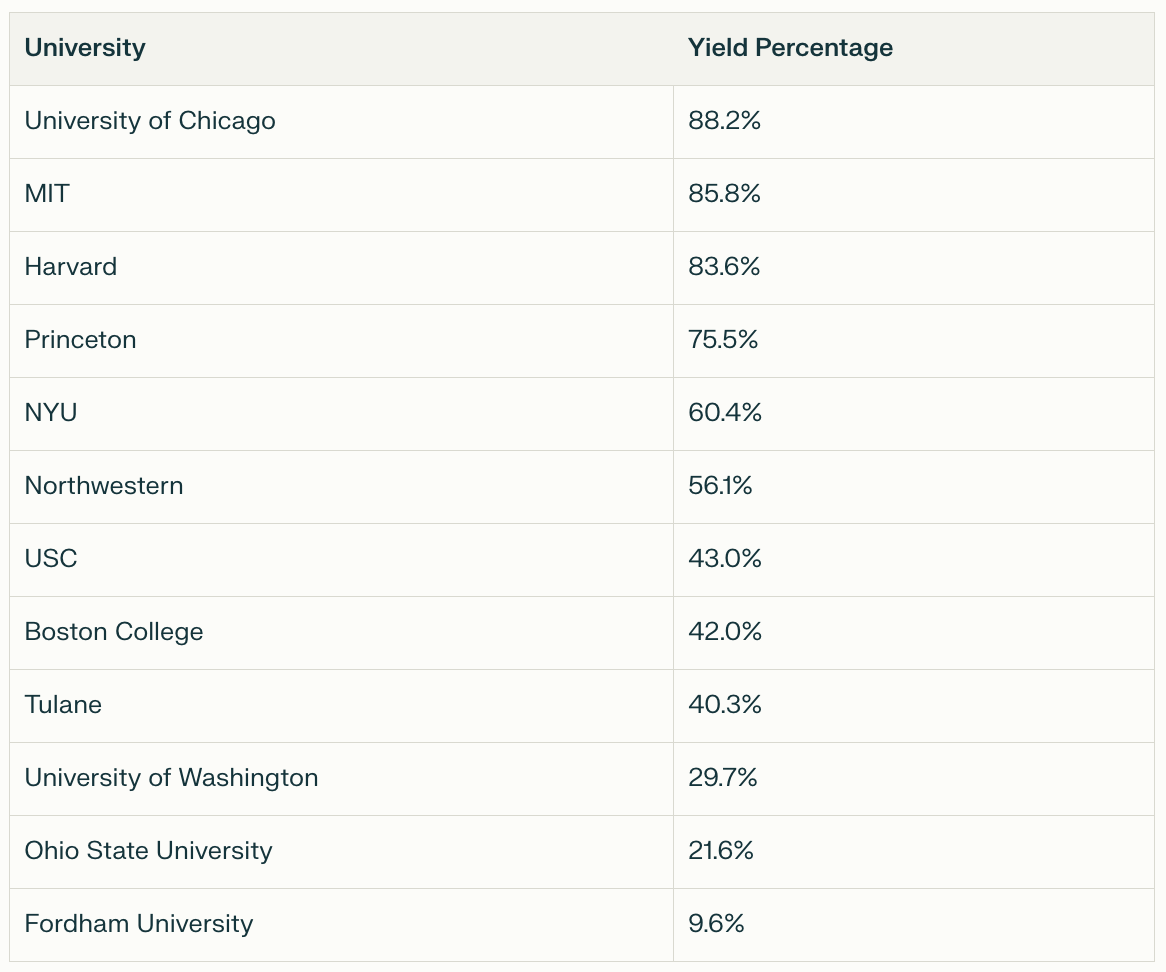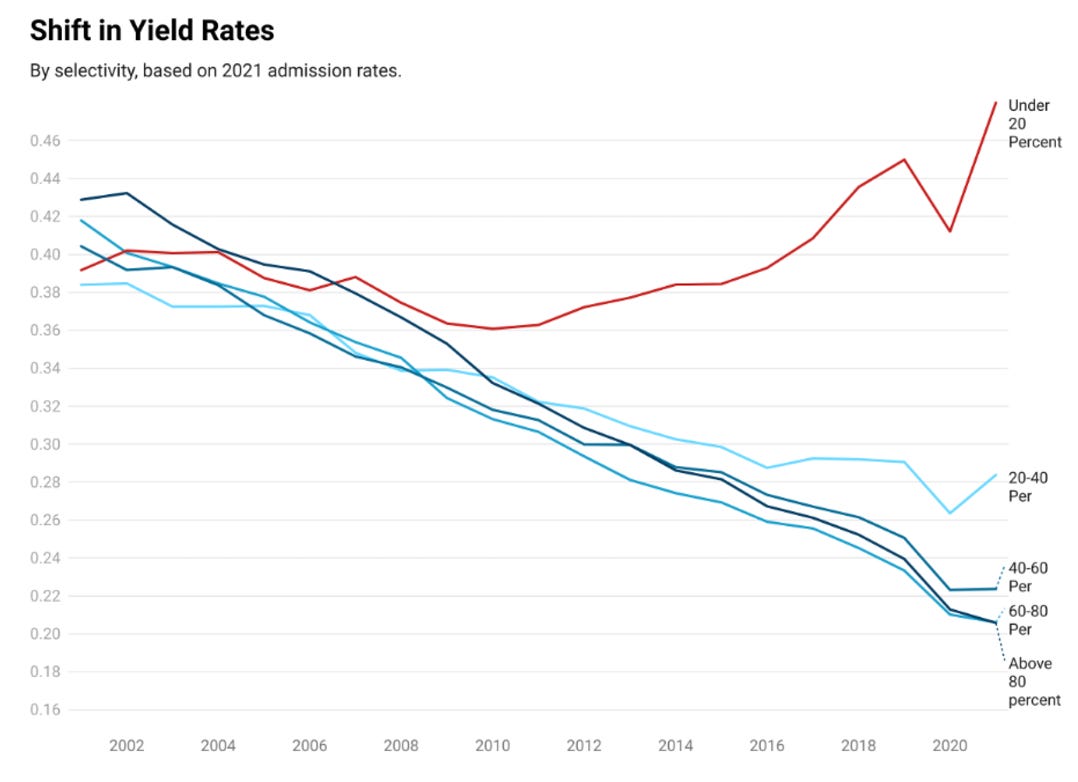What is “Yield”? (And Why Should You Care)
By understanding yield, you can make smarter choices about where and how to focus your efforts during the application process.
Suppose you are hosting a birthday party. You invite 20 classmates and friends. But here’s the tricky part—how many will actually show up? Will it be a packed house or a quiet gathering? Knowing the answer helps you plan for pizza and balloons.
Colleges face the same question when they send out acceptance letters, and their answer is “yield.”
What Is Yield?
Yield is the percentage of admitted students who choose to enroll at a college.
Think of it as a “yes rate”.
If a college sends out 100 acceptance letters and 40 students ultimately enroll, their yield is 40% (40 divided by 100). If a college instead has 60 students who enroll, their yield is 60%.
Why Is Yield Important To Colleges?
Colleges care about yield because it helps them:
Decide how many students to admit: If a college has room for 1,000 new students, they may admit 1,250 knowing not everyone will say yes.
Maintain a strong reputation: A higher yield signals popularity and desirability.
Plan for future years: Let’s face it, empty dorms and classrooms don’t pay the bills.
In an ideal world, colleges would have a 100% yield—every admitted student would enroll. But even the most desirable colleges, like Harvard or Stanford, don’t get a “yes” from everyone. Why? Let’s stick with the birthday party analogy.
Imagine that your best friend is also throwing a party on the same day and inviting the same group of people. Now, each guest has to decide which party to attend—yours or your best friend’s. Some will choose yours, some will choose theirs, and a few might not show up to either.
This is a lot like how students apply to multiple colleges but can only pick one to attend.
Colleges model their yield, and use this calculation to determine how many students to accept, and whom. They want students who are qualified, yes, but they also want to admit students that will attend.
Yield is actually a better gauge of a college’s popularity than its acceptance rate. It is much more interesting to think about how many admitted students choose to enroll than about how many applicants were admitted in the first place.
That said, having a high yield doesn’t necessarily mean a college offers a better academic experience—it just often means tougher admissions competition because more students see the school as desirable.
This website maintains a helpful list - link.
It’s also interesting to look at yield trends over time. The most selective colleges (those admitting <20% of applicants) have seen their yields rise, while all other colleges have seen theirs fall.
An important step is understanding where the college(s) you are interested in fall in this yield shift.
What Does This Mean for YOU?
Colleges don’t just wait around for students to say “yes.” They’re very strategic about their acceptance offers:
Heavily Weighting Early Admissions Colleges increasingly rely on Early Decision (ED) and Early Action (EA) to lock in a higher percentage of their incoming class early. Why? Students admitted through ED commit to attending, which guarantees a 100% yield for those spots.
Yield Protection Some colleges may waitlist or deny strong applicants they think won’t enroll.
Demonstrating Interest Some colleges track whether you’ve visited campus, opened emails, or attended events and use this info as part of their admissions criteria.
Understanding how colleges think about yield helps you create a smarter application strategy—one that shows your interest, uses early admissions wisely, and targets schools where you’ll shine.
4 Steps to Improve Your Chances at Yield-Conscious Colleges
Show You’re Interested
Visit the campus, attend virtual tours, meet with admissions officers at college fairs, and follow the college on social media. Open those emails they send (yes, they can see if you don’t).
Write a Great “Why Us” Essay
Many yield-conscious colleges have a supplemental essay that asks students why they’ve chosen to apply. Be specific. Name programs, professors, or clubs that genuinely excite you. Avoid vague answers that could apply to any college.
Build a Balanced College List
Include schools where you’re a strong fit and can confidently show genuine interest. This helps you avoid being “overqualified” in the eyes of yield-conscious schools.
Consider Early Admissions
Applying early can improve your chances—especially if the school is a top choice. See my previous post on this subject.



